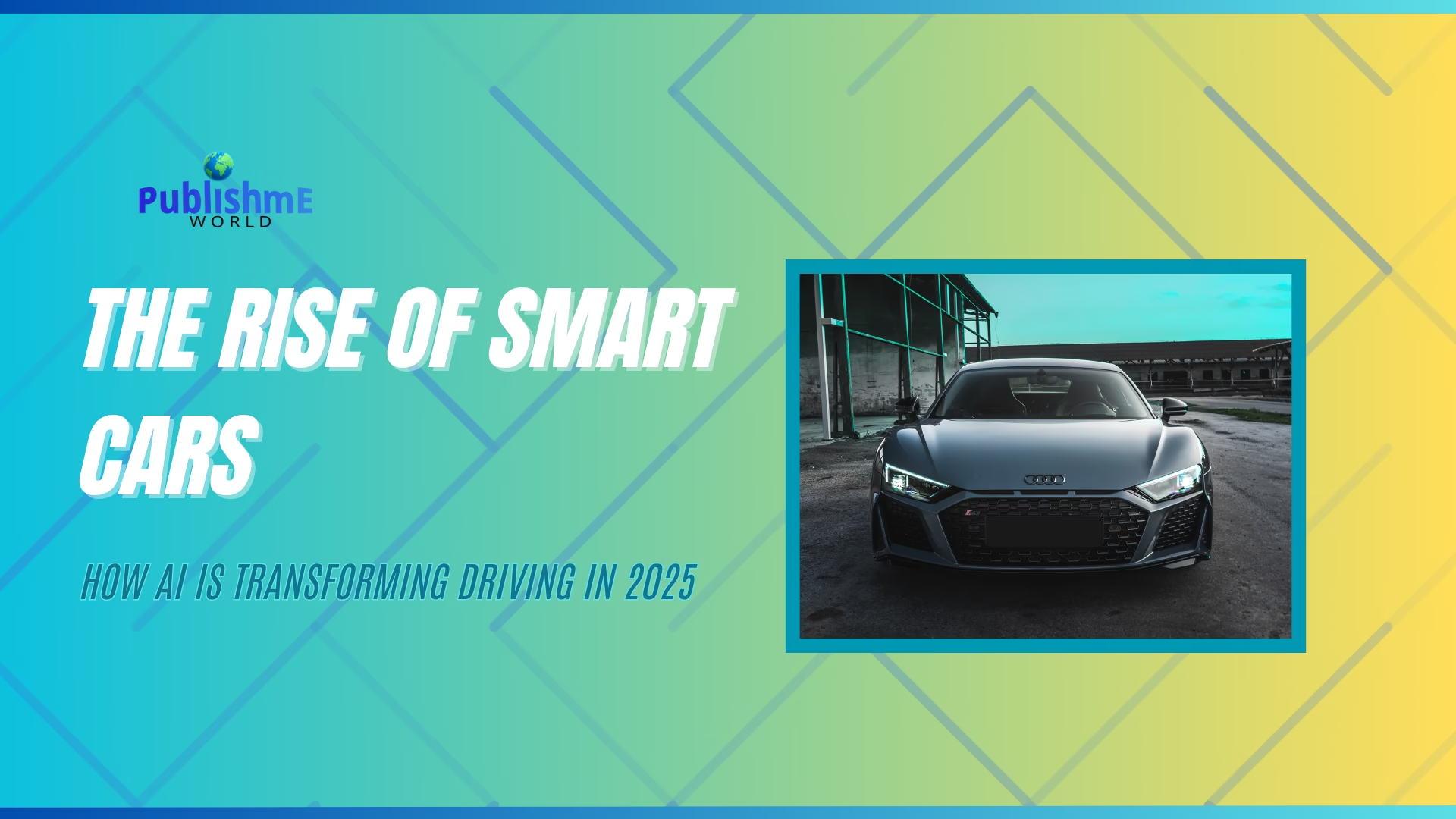Contents
Introduction
Smart Cars By 2025, the car is no longer a machine with wheels – it is an intelligent, associated and very responsible smart partner on the road. Thanks to the integration of artificial intelligence (AI), the modern car now believes, teaches and reacts faster than ever.
From real -time navigation to automatic driving help and personal infotainment, smart car driving experiences change. In this blog, we dive deeply how AI brings revolution in vehicles in 2025 and what it means for drivers, passengers and automotive industry.
Do the Smart Cars?
A smart car uses artificial intelligence, machine learning, sensors and connection to increase the driving experience. These vehicles collect and process real -time data:
Road
Driver
Environment
Only vehicle
This data helps to adapt movement to smart cars, avoid obstacles, notify drivers or even autonomous driving decisions.
Main features of smart cars in 2025
Today are the most common features found in smart cars:
Advanced Driver Assistance System (Adas)
Path keyfalls include automatic emergency braking, blind spot detection and adaptive cruise control.
AI-based navigation
AI analyzes traffic, weather, closure of roads and driver, which provides smart, sharp route suggestions.
Driver behavior monitoring
Detecting face identification and fatigue helps prevent accidents by packed up distracted or drivers.
Individual infection
Smart cars adjust music, light and seat settings based on user preferences using voice commands or AI profiles.
V2x communication (vehicle to someone)
Cars communicate with traffic lights, nearby vehicles and infrastructure for smooth and safe journey.
Top the car brand that leads Smart Revolution
Many motor vehicles drive to dominate the smart car location. Here are some industry leaders:
- Tesla
It is known for its AI-operated autopylot, real-time updates and full self-driving abilities. - BMW
Individual AI offers BMW Ideraive 9 with voice assistance, gest control and AR-Sminic navigation. - Mercedes-Benz
MBUX AI interface and level 3 in their S-Class and EQS models with autonomous driving functions. - Hyundai
Integration of AI with SmartSense technology for better security and automation.
The benefits of AI in modern driving
Increased security
AI discovers obstacles, predicts traffic behavior and helps with emergency maneuvers.
The fatigue of the driver decreased
Drivers are more comfortable and careful, with features such as auto-pilots on traffic or on highways.
Fuel and time efficiency
Smart root planning and eco-drawing mode protect both fuel and time.
Facility
From automatic parking to voice -activated command everything becomes hand -free and smooth.
Challenges and concerns
Despite quick adoption, smart cars meet obstacles:
Data privacy
Cars collect many personal information – from driver’s to location history – increases cyber security and privacy considerations.
Over -addiction of AI
Drivers can depend on automation, reduce their vigilance or control in emergencies.
Infrastructure compatibility
V2X systems depend on smart infrastructure such as connected traffic signals and 5G, which still develops in many areas.
What is the next for smart cars?
As AI develops, we can expect even more powerful integration:
Complete level 5 autonomy (no steering wheel, no driver is required)
AI future maintenance that detects problems before breaks
Member -based features where driver can unlock several smart features through apps
Blockchain-driven vehicle record for safe, tamper-proof service history
The future of smart driving is not just about automation, but also about the creation of trust between people and machines.
Conclusions: Smart Roads Forward
As 2025, we see a revolutionary change in the way we look at cars. Cars are no longer just transport equipment – they have developed in intelligent, affiliated colleagues, designed to understand, help and protect us. With the integration of AI, machine learning and real -time connection, smart cars set new standards for safety, efficiency and driving comfort.
With individual infotainment and voice -active control for advanced driver’s help system and future maintenance, these vehicles increase all aspects of the driving experience. They learn from driver behavior, estimate road conditions and even communicate with infrastructure and other vehicles to ensure smooth, safe journey.





